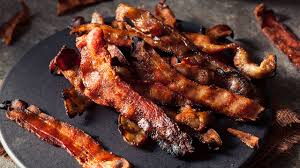Bacon Prices Could Soar Due to the ‘Pig Ebola’ That’s Devastating the Pork Industry

Nicknamed “pig ebola,” African swine fever is rapidly becoming one of Big Ag’s most devastating disease outbreaks, upending global trade, driving up pork prices and resulting in the slaughter of tens of millions of pigs and wild boar. And ground zero is China, the world’s biggest producer and consumer of pork.
Chinese farmers have lost 300 million to 350 million pigs to ASF so far in 2019 through either disease-related deaths or such emergency containment efforts as targeted culls. “We currently estimate 40% of the herd has already been lost, and more than 50% of the herd could be eliminated by year-end,” Christine McCracken, a senior analyst at RaboResearch, the research arm of Dutch investment bank Rabobank, told Fortune. “This loss would account for more pigs than are raised in an entire year by the EU and U.S.”
RaboResearch projects that ASF will wipe out roughly one-quarter of the global pig supply this year, and that it could take up to five years for impacted countries to replenish their domestic stocks. And there are signs export prices, which have already begun to climb, will soar and remain high for the foreseeable future.
RaboBank’s “Five Nation Hog Price Index,” which counts the Big 5 export/import markets (China, Canada, Brazil, the United States and European Union) has jumped more than 20 percent since December, 2018. That rise has been felt differently around the world. Hog and sow prices in the U.S. have barely budged year-to-date, but are expected to climb. In China, where pork is a beloved staple of the diet, hog prices jumped more than 40% in July, according to RaboResearch.
China far and away is the most impacted market, but the disease is rapidly spreading to neighboring countries. According to the Food and Agriculture Organization of the United Nations’ latest ASF heat map, the disease has spread to seven neighboring countries, including North Korea, Vietnam and Cambodia. In a sign of how fast the disease spreads, Vietnam confirmed its first outbreak in February. Six months later there are 62 outbreaks around the country forcing the country’s Ministry of Agriculture and Rural Development to order the cull of 4 million swine, according to FAO.
African swine fever is a highly contagious and highly lethal virus that spreads from pig to pig, impacting both domestic farmyard pigs and feral hogs. (There’s no health risk to humans.) The disease is extremely difficult to eradicate as curing or cooking the meat doesn’t eliminate it from the animal’s system. An infected pig or wild boar passes it quickly to other swine. Hunters and farmers can also easily pass it to pigs via contaminated clothes.
The current outbreak is believed to have started about a decade ago, spreading into Eastern Europe and Asia. Ten EU countries have reported ASF outbreaks, triggering the quarantine of regional farms. EU officials have ordered selective culls of stricken region and the expansion of boar-hunting season year-round with bounties instituted in some places. In the EU, the containment strategy seems to be working for farmyard pigs.
In Asia, and particularly China, the problem is trending in the wrong direction. And that’s triggered all kinds of global trade ramifications—not just for pork products, but other sources of animal protein as well. Poultry prices have begun to climb in ASF-stricken countries where pork supplies are suffering. Desperate for pork, China has upped imports from trade partners. “In the first five months of 2019, EU exports to China were up 41% YOY,” RaboResearch said in its latest quarterly report on the pork industry.
It’s even become a rare bright spot for the American farmer in a summer of trade tariffs. China is a willing buyer of American animal protein despite the ongoing trade war between Washington and Beijing.
“I am not sure how much more serious the trade war will get, but my expectation is that China will continue to buy U.S. pork,” said McCracken. “There is currently not enough pork (or other protein) available in the rest of the world to fully meet China’s protein needs. We expect U.S. pork, beef, and poultry to help fill the void until China can rebuild its internal supplies.”
More must-read stories from Fortune:
—The economy is in code yellow for a recession based on these 9 metrics
—The death of trading: Why more big banks think the business is a losing bet
—Recession watch: 3 ways to reframe your thinking about the next downturn
—What are negative interest rates and why is everybody so worried about them?
—Why WeWork won’t be in the S&P 500 after its IPO

